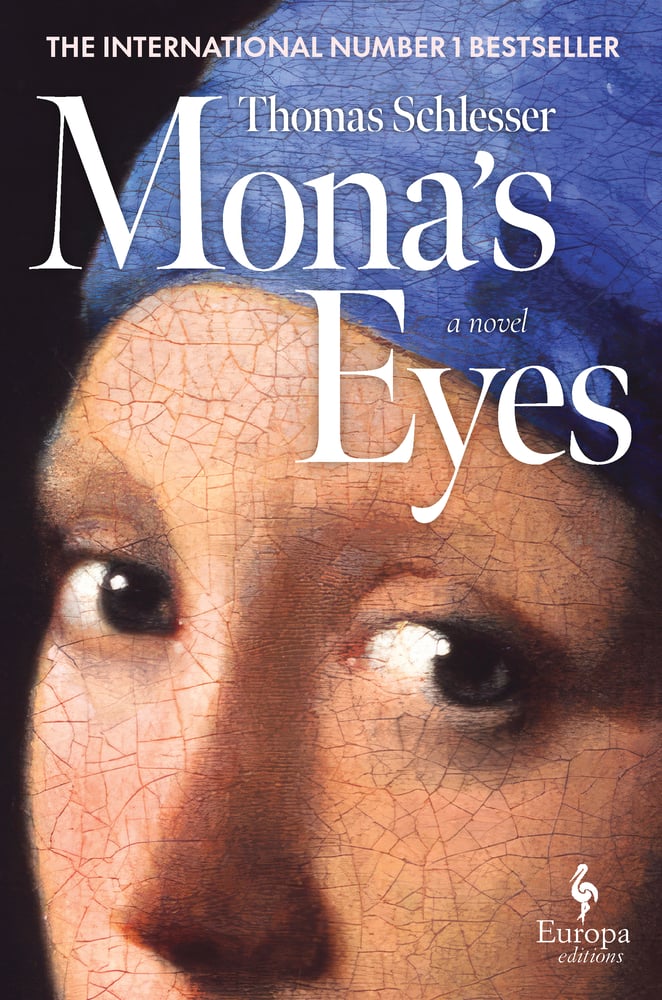Mona’s Eyes by Thomas Schlesser
A young girl whose sight is threatened by a mysterious ailment is escorted by her grandfather through the great art museums of Paris so that she may view various forms of beauty before her possible loss of vision. Warm but intellectual, it is a joy.
Mona’s Eyes by Thomas Schlesser, translated by Hildegarde Serle
Europa Editions
Hardcover | $30
9798889661115
Ordinarily we (the book loving community) parrot the old saying that “you don’t judge a book by its cover”. While that is still true, despite its worn nature, those who sell books will tell you that you don’t judge it, but that’s how you sell it. Cover art is vital to telegraphing what the reader can expect when they pick up a new publication. Here, the partial image taken from Vermeer’s Girl With a Pearl Earring immediately identifies this volume with art and the world of art. The reader will soon discover that the dust jacket is an integral part of the process of absorbing the text: unfolded, it presents a reproduction of each work of art described by the chapters of this remarkable achievement. This, in my experience, is unique.
The basics of the tale are simple: a young girl suffers an onset of blindness that lasts nearly an hour. There seems to be no reason for this distressing occurrence and she sees and continues to see a doctor to determine the cause and to perhaps predict if it will recur, and whether there is a risk of her losing her sight permanently. Her grandfather, a lover and student of art in all its forms develops a strategy to forego that unwelcome eventuality. Rather than take her to her weekly appointment with a psychologist, he instead takes her to the grand museums of Paris to view great works by famous and obscure artists, the notion being that she will have been presented to and will understand true beauty should she become unable to physically see it.
What is not so simple is the truly beautiful relationship, already a loving one, that grows between Mona and her Grandfather and the remarkable results of her dawning discovery of the nuances of painting, sculpture and photography. She is, it seems, something of a genius. Each chapter is devoted to one work of art (each one is reproduced on the fold-out dust jacket) and we are provided with a short update on Mona’s life at school, home and physician’s office, an explanation of to which museum her Grandfather is taking her, a narrative description of the work of art at issue and Mona’s increasingly sensitive and perceptive reactions to it. This pattern carries throughout the book, and becomes a sort of comforting aspect of regularity and familiarity, while the reader’s personal discoveries about paintings and other works perhaps seen many times already moves into a new realm of understanding.
It is not only a rewarding experience for the reader but performs one of the highest purposes of a good book: it creates the urge to find out more about each painting, sculpture, photograph and artist that is presented. The reader’s curiosity is piqued, a feature that is intriguing and a worthy goal of the author. This would be, beyond a great read, a very fine gift for one who loves writing and art.



